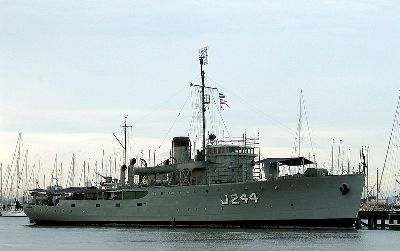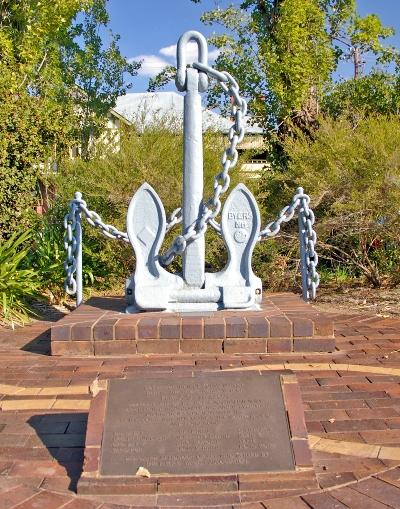Introduction
In February 1938 the Australian Commonwealth Naval Board (ACNB), which consisted of both government officials and flag officers of the Australian navy, defined that there was an urgent requirement for several dozens of military vessels for local defense and guard duties. The ships would have to be built both cheap and simple so there was a need for a simple and basic design. The basic requirements were defined by a displacement of approximately 500 tons, a speed of approximately 10 knots and a range of 2,000 nautical miles. The vessels would be used for mine detection and for submarine hunting. Soon it became clear that the basic requirements, as proposed by the ACNB, would not completely comply.
The ACNB searched for a comparable design of a ship in Great Britain, but there was not a single design which complied with all requirements. Therefore the engineers of the Royal Australian Navy (RAN) placed themselves at the drawing boards. The design grew into a mix of that of the network ships of the Kangaroo-class which were never built, British minesweepers of the Bangor-class and existing designs of submarine warfare vessels. The designers under the command of Rear Admiral P.E. McNeil in February 1939 presented a design of 650 tons and a max speed of 15 knots, which was approved by the ANCB as well as the Australian admiralty and by the British admiralty.
The financing of the new class vessels was arranged in the Commonwealth Government’s Shipbuilding Programme. Of the 56 ships, 20 would be constructed at the account of the British admiralty and 36 were to be ordered by the Australian navy. For the RAN this was only an accounting detail as all 56 ships would be deployed by the RAN and crewed by Australians. Apart from that, four ships of the new design were ordered by the Royal Indian Navy (RIN). These ships were to be manned by British naval personnel. The vessels would have to be constructed for only 25,000 Australian dollars each.
Never before in Australia that many war ships had been built and because the construction had to take place within months, an impressive logistical train was set up in the large southerly country. In the design an engine installation was foreseen which consisted of a simple triple-expansion steam engine which could be constructed in the existing workshops of train locomotive manufacturers. In order to obtain sufficient capacity, several wharves, which had been closed down several years ago because of the depression in the 30’s, were re-opened. Also no less than eight ship yards were involved in order to comply with this large request in short notice.
On February 10, 1940 the keel was laid down of the Bathurst, the first of the new ships, on the Cockatoo Dockyard in Sydney. The whole class therefore, in a good tradition, was baptized the Bathurst-class. The ships were noted as Australian Minesweepers (AMS’s) in order to hide from the Japanese, the most important potential enemy, that the vessels were also submarine warfare ships. As the vessels were to be adapted to manifold tasks, they were called ‘corvettes’ after a smallish type of sailing ship which in earlier days was used for local defense. The production of the ships began slow, mainly because of problems with the supply of raw materials and because of the learning curve involved in the initiation of the enormous logistical operation, but started to increase its speed in 1941. From that year onwards there were months when two or even three new Bathurst-class corvettes were introduced into the Australian or Indian navy.
During the Second World War it would appear that the Bathurst-class corvettes would comply with their planned role as multi-purpose work horses. They were used to sweep mines, to hunt submarines, to transport troops, to carry out coastal bombardments and for patrol, transport, work-ships and surveyor tasks. Because of the successful design the ACNB generated the idea during the construction of the Bathurst-class, to construct ships in Australia of a larger design. This however appeared to be asked too much of the shipbuilding capacity of this large country but with only 12 million inhabitants. The need for larger ships during the war was met by the British admiralty by the application of the Flower-class corvettes and River-class frigates.
As the Bathurst-class corvettes were all named after small and medium sized Australian cities, the names had a large diversity. So there were aboriginal names like HMAS Toowoomba or HMAS Wollongong, European names like HMAS Deloraine or HMAS Shepparton or very funny sounding names like HMAS Gympie or HMAS Dubbo. This fact only contributed to the multi role and multi-purpose image of the class.
Images
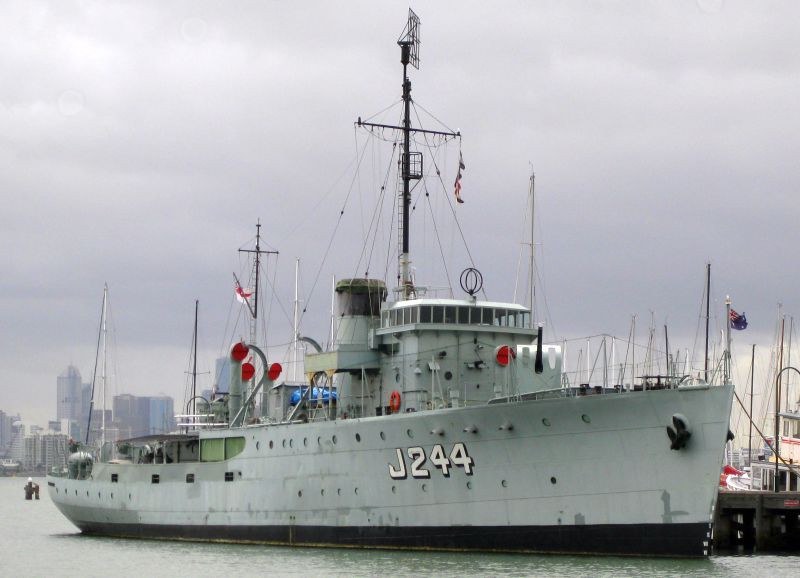 HMAS Castlemaine, one of the remaining corvettes of the Bathurst-class. Source: Wikipedia.
HMAS Castlemaine, one of the remaining corvettes of the Bathurst-class. Source: Wikipedia.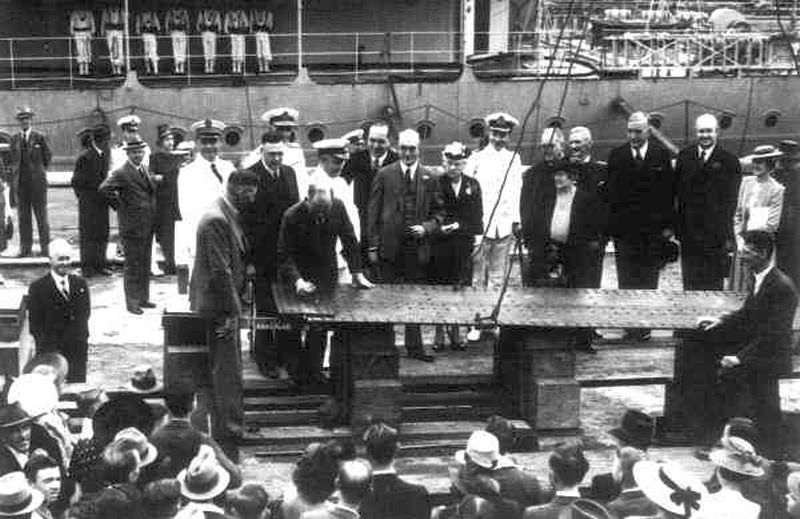 Minister of Navy Frederick Stewart puts the first rivet in the first keel of the Bathurst, 10 February, 1940. Source: Dutchfleet.
Minister of Navy Frederick Stewart puts the first rivet in the first keel of the Bathurst, 10 February, 1940. Source: Dutchfleet.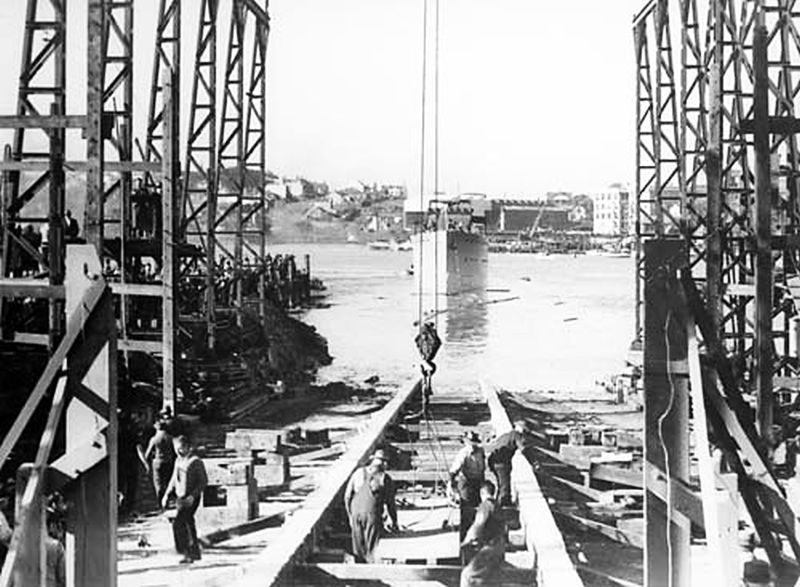 Right after launching Deloraine, the keel of the next corvette is laid. Source: Dutchfleet.
Right after launching Deloraine, the keel of the next corvette is laid. Source: Dutchfleet.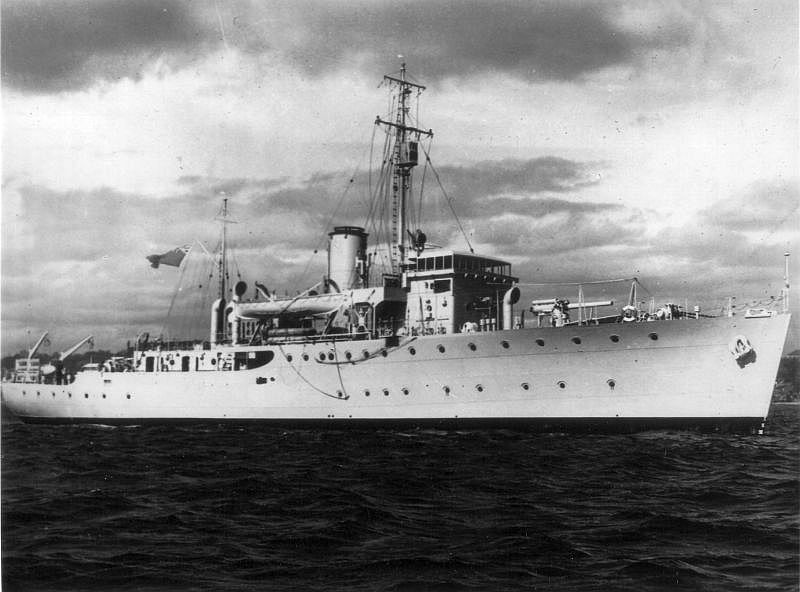 HMAS Mildura. Source: World naval ships.
HMAS Mildura. Source: World naval ships. HMAS Bowen. Source: World naval ships..
HMAS Bowen. Source: World naval ships..Technical data
Technical data according to the design:
| Overall length: | 57 meters | |
| Beam: | 9.4 meters | |
| Draught: | 2.6 meters | |
| Standard Displacement: | 650 tons | |
| Loaded displacement: | 875 tons | |
| Engine installation: | Triple expansion steam engine, 2 Yarrow boilers. | |
| Engine power: | 2,000 shp | |
| Max speed: | 15 knots | |
| Bunker capacity: | 186 tons fuel oil | |
| Range: | 2,640 nautical miles at 10 knots | |
| Crew: | 85 persons | |
| Armament: | 1 x 10,2 cm gun, 1x 40mm Bofors and 3 x 20mm Oerlikon machine guns, 40 depth charges; depth-charge-launchers. |
In reality the armament often diverted from the designed standards. In almost all cases this was caused by the unavailability of the arsenal. Therefore many of the Bathurst-class corvettes at delivery were equipped with a 7.5 or 7.6 cannon, also called ‘12 pounder’ as the grenades for that type of ordnance weighed 12 pounds. The shortage of 40mm and 20mm machine guns was compensated by the application of .303 Lewis or Vickers machine guns, dating back to the First World War. From the moment the Bofors and Oerlikon machine guns became available, they were installed immediately, but standardization was never realized. This meant that HMAS Geraldton at one moment had the availability of six Oerlikons and HMAS Junee had a 10.2cm cannon and a 40mm machine gun.
For the anti-submarine warfare the new corvettes had the Type 38 Active Sound Detection (predecessor of sonar and abbreviated ASDIC) at their disposal and depth charges. For the mine sweeping the ships mostly got the availability of the modern LL swiping gear, which could be used in both shallow and deeper water. Later on during the war various vessels of this class were equipped with paravanes against acoustic and magnetic mines.
As the corvettes became better and better equipped during the war, with radar for example, extra ammunition, new depth charge launchers, better fire guidance systems etc. the standard displacement increased to some 800 tons and the deadweight capacity to 1,025 tons. Also the number of crew members increased as extra specialized personnel was required for the handling of the new equipment. Some of the corvettes carried up to 100 men during the war. That made the living circumstances aboard the ships even more uncomfortable. Those had never been too pleasant as the Bathurst-class had to be constructed cheaply and quickly. For the sailors and engine room personnel there were small ten-men huts, in which the crew slept in hammocks. Because of seawater these rooms were always humid and the tropical circumstances added to the discomfort, certainly when the port holes had to be kept shut as a consequence of high sea state. The vessels also could carry only little food and water and the consequences of this type of logistical limitations did not improve when even more crewmembers boarded. In practice the flexible Australian crewmembers appeared to suffer only a little from those circumstances. Maybe this was caused by the fact that for most men the placement onboard of the corvettes was their first assignment to a warship and therefore they did not know better.
In spite of the fact that ships of the Bathurst-class were defined as corvettes, in many cases they received bow numbers indicating it concerned anti-mine-warfare ships. In first instance all ships received a number starting with the letter J which identified them as minesweepers. The only exception to this was HMAS Ararat with a bow number starting with K, used for corvettes. This was an homage to the Flower-class corvette HMS Gladiolus which had been sunk by a German U-boat in October 1941. Bathurst-class corvettes serving with the British Pacific Fleet received temporarily a bow number starting with the letter B. At the end of the Second World War all bow numbers were revised in order to create more uniformity amongst the numerous allied forces. Funny enough the Bathurst-class corvettes, constructed for the RAN, received a bow number that started with the letter M, which earmarked them officially again as anti-mine warfare ships.
Images
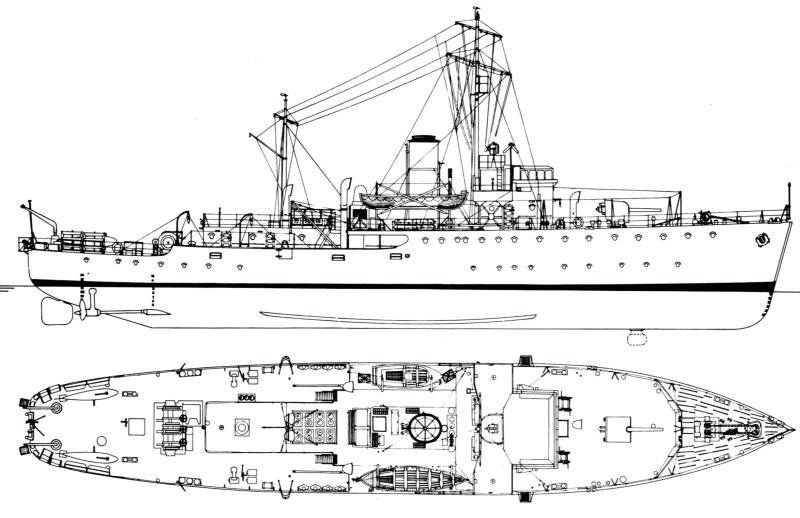 Design Bathurst-class corvettes. Source: Naval war ships.
Design Bathurst-class corvettes. Source: Naval war ships.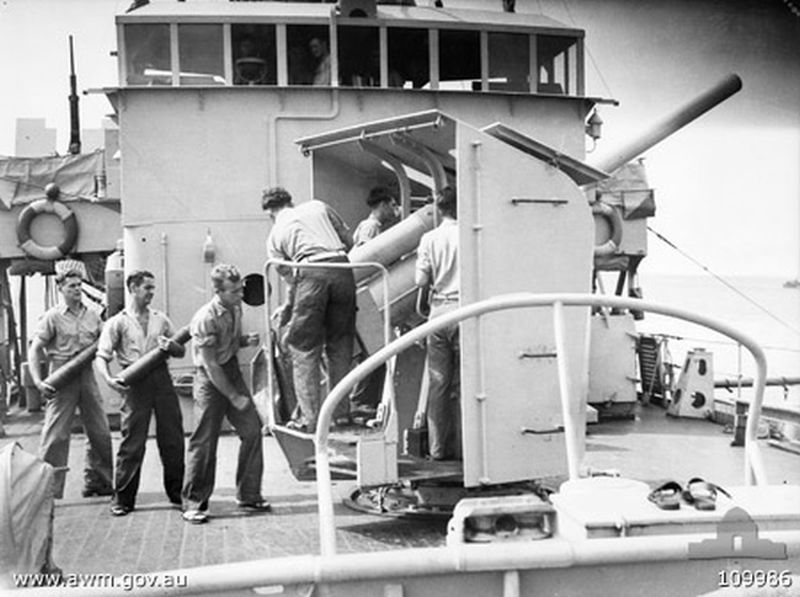 The artillery crew of HMAS Cowra trains loading the 10.2 cm gun. Source: Australian War Memorial.
The artillery crew of HMAS Cowra trains loading the 10.2 cm gun. Source: Australian War Memorial.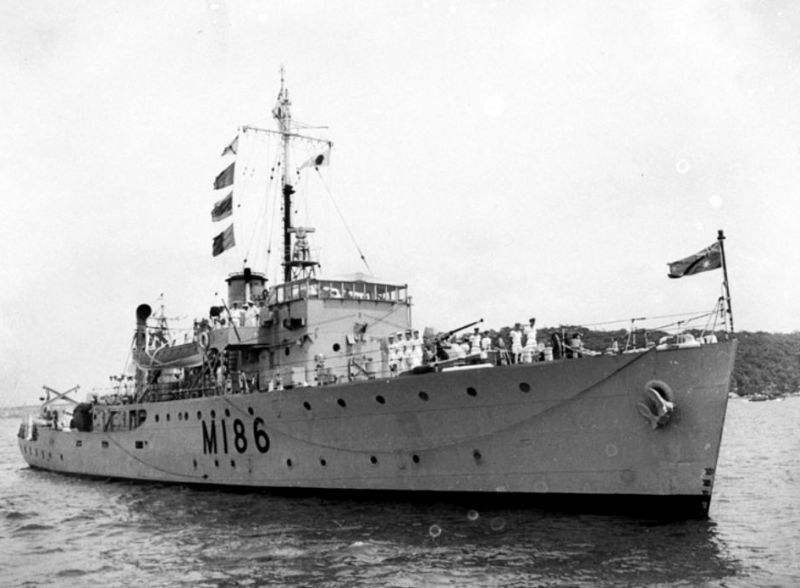 HMAS Cootamundra. Source: World naval ships.
HMAS Cootamundra. Source: World naval ships.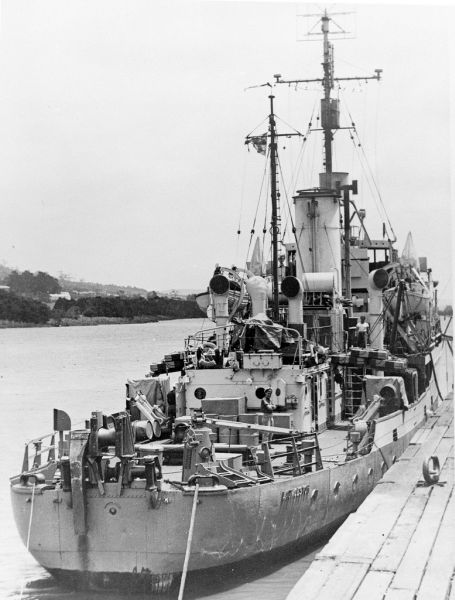 HMAS Launceston. Source: World naval ships.
HMAS Launceston. Source: World naval ships.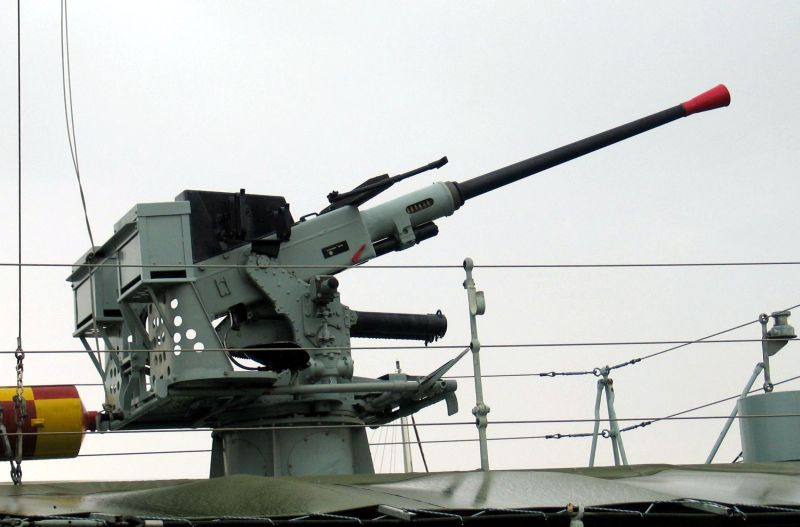 Completely restored Bofors 40 mm machine gun aboard the museum ship HMAS Castlemaine. Source: Navy gov.
Completely restored Bofors 40 mm machine gun aboard the museum ship HMAS Castlemaine. Source: Navy gov.Class overview
The Bathurst-class corvettes were built at smaller ship yards that never before had received orders for the navy, with the exception of the leading wharf Cockatoo Island Dockyard. This had been organized in order to spare the wharves that did build or repair war ships.
The eight yards where the corvettes were constructed were:
- Cockatoo Island Dockyard in Sydney, New South Wales (8 corvettes).
- Walkers Ltd in Maryborough, Queensland (7 corvettes).
- Evans Deakin & Co in Brisbane, Queensland (11 corvettes).
- Morts Dock & Engineering Co in Sydney, New South wales (14 corvettes).
- Poole & Steele in Sydney, New South Wales (7 corvettes).
- NSW State Dockyard in Newcastle, New South wales (1 corvette).
- HMA Naval Dockyard in Williamstown, Victoria (8 corvettes).
- Broken Hill Pty. Co.Ltd in Whyalla, South Australia (4 corvettes).
Class overview
| Name and bow number(s)A, RAN or RIN | Yard | Keel laid | Launched | In service | |
| HMAS Ararat K34/M34 | RAN | Evans Deakin & Co. | 6 July 1942 | 20 February 1943 | 16 June 1943 |
| HMAS Armidale J240 | RAN | Morts Dock & Engineering Co. | 1 September 1941 | 24 January 1942 | 11 June 1942 |
| HMAS Ballarat J184/B236 | A | HMA Naval Dockyard | 19 April 1940 | 10 December 1940 | 30 August 1941 |
| HMAS Bathurst J158 | A | Cockatoo Island Dockyard | 10 February 1940 | 1 August 1940 | 6 December 1940 |
| HMAS Benalla J323/M323 | RAN | HMA Naval Dockyard | 24 March 1942 | 19 December 1942 | 27 April 1943 |
| HMAS Bendigo J187/B237 | A | Cockatoo Island Dockyard | 12 August 1940 | 1 March 1941 | 10 May 1941 |
| HMIS Bengal J243 | RIN | Morts Dock & Engineering Co. | 3 December 1941 | 7 July 1942 | 8 August 1942 |
| HMIS Bombay J249 | RIN | Morts Dock & Engineering Co. | 19 July 1941 | 6 December 1941 | 24 April 1942 |
| HMAS Bowen J285/M285 | RAN | Walkers Limited | 9 Februari1942 | 28 July 1942 | 9 November 1942 |
| HMAS Broome J191 | A | Evans Deakin & Co. | 3 May 1941 | 6 August 1941 | 29 June 1942 |
| HMAS Bunbury J241/M241 | RAN | Evans Deakin & Co. | 1 November 1941 | 16 May 1942 | 3 January 1943 |
| HMAS Bundaberg J231/M231 | RAN | Evans Deakin & Co. | 7 June 1941 | 1 December 1941 | 12 September 1942 |
| HMAS Burnie J198/B238 | A | Morts Dock & Engineering Co. | 4 June 1940 | 25 August 1940 | 15 April 1941 |
| HMAS Cairns J183/B239 | A | Walkers Limited | 31 March 1941 | 7 October 1941 | 11 March 1942 |
| HMAS Castlemaine J244/M244 | RAN | HMA Naval Dockyard | 17 January 1941 | 7 August 1941 | 17 June 1942 |
| HMAS Cessnock J175/B240 | A | Cockatoo Island Dockyard | 16 April 1941 | 17 October 1941 | 26 January 1942 |
| HMAS Colac J242/M242 | RAN | Morts Dock & Engineering Co. | 18 April 1941 | 30 August 1941 | 6 January 1942 |
| HMAS Cootamundra J316/M186 | RAN | Poole & Steele | 26 February 1942 | 3 December 1942 | 30 April 1943 |
| HMAS Cowra J351/M351 | RAN | Poole & Steele | 12 August1942 | 27 May 1943 | 8 October 1943 |
| HMAS Deloraine J232/M232 | RAN | Morts Dock & Engineering Co. | 19 March 1941 | 26 July 1941 | 22 November 1941 |
| HMAS Dubbo J251/M251 | RAN | Morts Dock & Engineering Co. | 13 October 1941 | 7 March 1942 | 31 July 1942 |
| HMAS Echuca J252/M252 | RAN | HMA Naval Dockyard | 22 February 1941 | 17 January 1942 | 7 September 1942 |
| HMAS Fremantle J246/M246 | RAN | Evans Deakin & Co. | 11 February 1942 | 18 August 1942 | 24 March 1943 |
| HMAS Gawler J188/B241 | A | Broken Hill Pty. Co. | 24 January 1941 | 4 October 1941 | 14 August 1942 |
| HMAS Geelong J201 | RAN | HMA Naval Dockyard | 16 October 1940 | 22 April 1941 | 16 January 1942 |
| HMAS Geraldton J178/B242 | A | Poole & Steele | 20 November 1940 | 16 August 1941 | 6 April 1942 |
| HMAS Gladstone J324/B324 | RAN | Walkers Limited | 4 August1942 | 26 November 1942 | 22 March 1943 |
| HMAS Glenelg J236/M236 | RAN | Cockatoo Island Dockyard | 2 March 1942 | 25 September 1942 | 16 November 1942 |
| HMAS Goulburn J167/B243 | A | Cockatoo Island Dockyard | 10 July 1940 | 16 November 1940 | 28 February 1941 |
| HMAS Gympie J238/M238 | RAN | Evans Deakin & Co. | 27 August 1941 | 30 January 1942 | 4 November 1942 |
| HMAS Horsham J235/M235 | RAN | HMA Naval Dockyard | 26 June 1941 | 16 May 1942 | 18 November 1942 |
| HMAS Inverell J233/M233 | RAN | Morts Dock & Engineering Co. | 7 December 1941 | 2 May 1942 | 17 September 1942 |
| HMAS Ipswich J186/B244 | A | Evans Deakin & Co. | 6 March 1941 | 11 August 1941 | 13 June 1942 |
| HMAS Junee J362/M362 | RAN | Poole & Steele | 17 February 1943 | 16 November 1943 | 11 April 1944 |
| HMAS Kalgoorlie J192/B245 | A | Broken Hill Pty. Co. | 27 July 1940 | 7 August 1941 | 7 April 1942 |
| HMAS Kapunda J218/M218 | RAN | Poole & Steele | 27 August1941 | 23 June 1942 | 21 October 1942 |
| HMAS Katoomba J204/M204 | RAN | Poole & Steele | 9 September 1940 | 16 April 1941 | 17 December 1941 |
| HMAS Kiama J353/M353 | RAN | Evans Deakin & Co. | 2 November 1942 | 3 July 1943 | 26 January 1944 |
| HMAS Latrobe J234/M234 | RAN | Morts Dock & Engineering Co. | 27 January 1942 | 19 June 1942 | 6 November 1942 |
| HMAS Launceston J179/B246 | A | Evans Deakin & Co. | 23 December 1940 | 30 June 1941 | 9 April 1942 |
| HMAS Lismore J145/B247 | A | Morts Dock & Engineering Co. | 26 February 1940 | 10 August 1940 | 24 January 1941 |
| HMAS Lithgow J206/M206 | RAN | Morts Dock & Engineering Co. | 19 August 1940 | 21 December 1940 | 14 June 1941 |
| HMAS Maryborough J195/B248 | A | Walkers Limited | 16 April 1940 | 17 August 1940 | 12 June 1941 |
| HMIS Madras J237 | RIN | Cockatoo Island Dockyard | 4 August 1941 | 17 February 1942 | 12 May 1942 |
| HMAS Mildura J207/M207 | RAN | Morts Dock & Engineering Co. | 23 September 1940 | 15 March 1941 | 23 July 1941 |
| HMAS Pirie J189/B249 | A | Broken Hill Pty. Co. | 19 May 1941 | 3 December 1941 | 10 October 1942 |
| HMAS Parkes J361/M361 | RAN | Evans Deakin & Co. | 16 March 1943 | 30 October 1943 | 25 May 1944 |
| HMIS Punjab J239 | RIN | Morts Dock & Engineering Co. | 26 May 1941 | 20 October 1941 | 20 Marcht 1942 |
| HMAS Rockhampton J203/M203 | RAN | Walkers Limited | 6 November 1940 | 26 June 1941 | 21 January 1942 |
| HMAS Shepparton J248/M248 | RAN | HMA Naval Dockyard | 14 November 1941 | 15 August 1942 | 1 February 1943 |
| HMAS Stawell J348/M348 | RAN | HMA Naval Dockyard | 18 June 1942 | 3 April 1943 | 7 August 1943 |
| HMAS Strahan J363/M363 | RAN | NSW State Dockyard | 9 October 1942 | 12 July 1943 | 14 March 1944 |
| HMAS Tamworth J181/B250 | A | Walkers Limited | 25 August 1941 | 14 March 1942 | 8 August 1942 |
| HMAS Townsville J205/M205 | RAN | Evans Deakin & Co. | 16 November1940 | 13 May 1941 | 19 December 1941 |
| HMAS Toowoomba J239 | A | Walkers Limited | 6 August 1940 | 26 March 1941 | 9 August 1941 |
| HMAS Wagga J315/M315 | RAN | Morts Dock & Engineering Co. | 8 March 1942 | 25 July 1942 | 18 December 1941 |
| HMAS Wallaroo J222 | RAN | Poole & Steele | 24 April 1941 | 18 FebruarY 1942 | 15 July 1942 |
| HMAS Warrnambool J202 | RAN | Morts Dock & Engineering Co. | 13 November 1940 | 8 May 1941 | 23 September 1941 |
| HMAS Whyalla J153/B252 | A | Broken Hill Pty. Co. | 24 June 1940 | 12 May 1941 | 8 January 1942 |
| HMAS Wollongong J172/B253 | A | Cockatoo Island Dockyard | 29 January 1941 | 5 July 1941 | 23 October 1941 |
A=Admiralty
Images
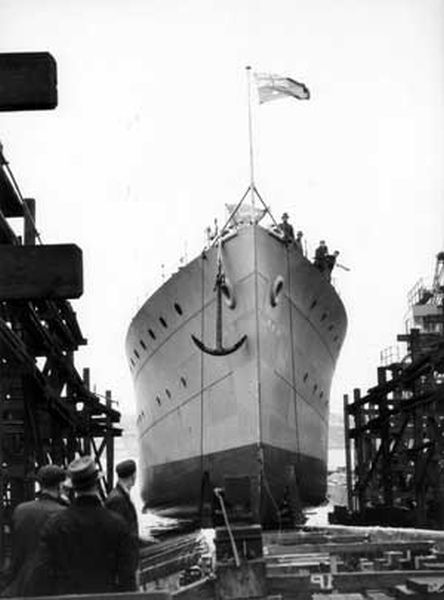 Launching of Goldburn, 16 November, 1940. Source: Navy gov.
Launching of Goldburn, 16 November, 1940. Source: Navy gov.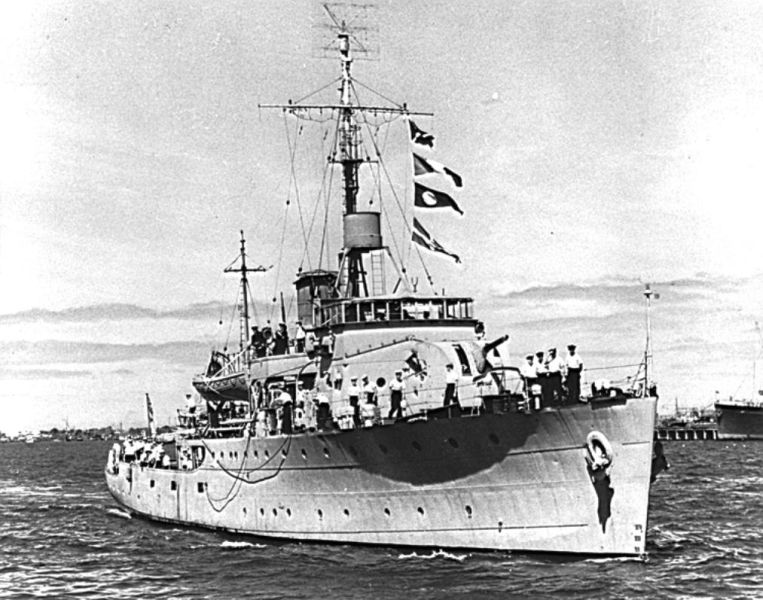 HMAS Gladstone. Source: World naval ships.
HMAS Gladstone. Source: World naval ships.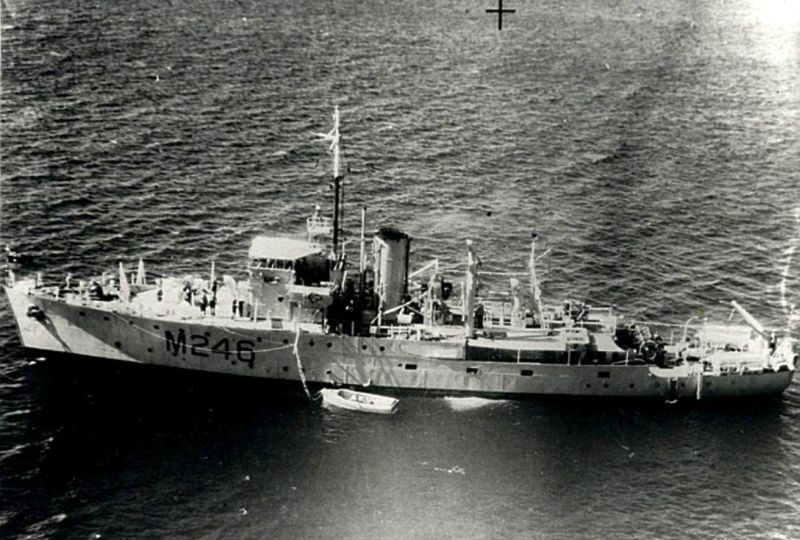 HMAS Fremantle. Source: World naval ships.
HMAS Fremantle. Source: World naval ships.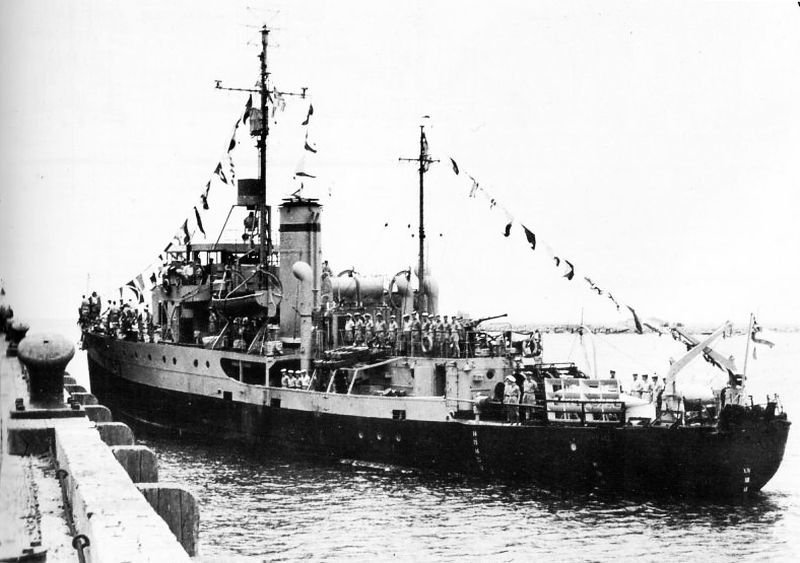 HMAS Whyalla. Source: World naval ships.
HMAS Whyalla. Source: World naval ships.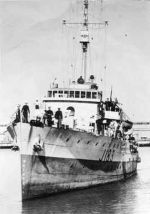 HMAS Cairns. Source: Navy gov.
HMAS Cairns. Source: Navy gov.The Bathurst-class corvettes during the Second World war
In December 1941 and January 1942, HMASs Maryborough, Wollongong, Toowoomba, Bathurst, Burnie, Goulburn and Ballarat participated in the battle of the Malayan Campaign, the defense of Singapore and of the Dutch East Indies. After the fall of Singapore, on January the 15th 1942, the seven Australian corvettes were the last ships to leave port. When on March 8, 1942, Dutch East India capitulated, the seven corvettes again were the last allied vessels to leave Tjilatjap, on South Java. Covered by heavy tropical rainstorms the seven ships were able to escape to Australia.
Early 1942 some Bathurst-class corvettes also scored their first big success. HMAS Deloraine, assisted by HMAS Katoomba, HMAS Lithgow and the American destroyer USS Edsall on 20 January sank the Japanese submarine I-124 with depth charges, somewhat north of Darwin.
Towards June 1942, 24 Bathurst-class corvettes were stationed in various Australian ports from where they kept themselves occupied escorting services and submarine warfare. Especially convoys to and from the front in New-Guinea were protected by the Australian corvettes but also convoys in the Australian coastal waters.
Early 1943 HMAS Benalla and HMAS Shepparton were refurbished into hydrographical survey ships. Thereafter the corvettes joined Task Group 70.5 of the US Seventh Fleet and were used for mapping the areas where American amphibious landings would take place later on.
In May 1943 HMAS Cairns, Cessnock, Geraldton, Wollongong, Gawler, Ipswich, Lismore and Maryborough were detailed to the British Mediterranean Fleet. The Bathurst-class corvettes in the Mediterranean were mainly active as escorts of convoys. Several times they proved their value by shooting down German and Italian aircraft with their excellent anti-aircraft batteries.
On 11 June, 1943, HMAS Wallaroo had finished her mine sweeping duties in the Indian Ocean near Fremantle and just after midnight was on her way to Perth in Western Australia. The corvette did not carry any navigation lights in order to avoid discovery by enemy submarines. The cloudy sky was overcast and in the darkness Wallaroo collided with the also blacked-out American Liberty Ship Henry Gilbert Costin which was heading for Fremantle too. At the collision three crewmembers of the Australian corvette lost their lives and the ship sank four hours later. The other crew were able to save themselves by boarding rafts and life boats. The Liberty Ship was able to reach Fremantle only slightly damaged.
Late in the evening of 11 September, 1943, in the westerly basin of the Mediterranean the German submarine U 617 was attacked several times by Wellington bombers of the Royal Air Force (RAF). The U boat was heavily damaged and beached in Spanish Morocco. The German submarine later on was destroyed by artillery fire from the British Flower-class corvette HMS Hyacinth and HMAS Wollongong. Some five months later again a number of Bathurst-class corvettes were involved in the destruction of an enemy sub. On 11 February, 1944, the Japanese submarine RO-110 was sunk by cannon fire of HMAS Launceston, HMAS Ipswich and the Indian gun ship HMIS Jumna in the Gulf of Bengal, at the east coast of India.
On October 18th, 1944, HMAS Geelong collided with the American tanker York north of Langemak at the north coast of New-Guinea. The Australian corvette was so heavily damaged that it sank. All crewmembers of the Geelong were rescued by the York and safely disembarked at Langemak.
Early 1945, 17 of the Bathurst-class corvettes that had been constructed at the account of the British Admiralty, joined the British Eastern Fleet. They therefore received bow numbers starting with the letter B. Eight of those ships swept Victoria Harbour, the Port of Hong Kong, for mines before this harbor became the home base for the British Eastern Fleet.
In the summer of 1945 most of the islands under Japanese occupation in the Far East had been liberated by the allied forces and many allied ships were deployed to repatriate prisoners of war. HMASs Cootamundra, Glenelg, Junee and Latrobe were appointed to pick up Australian, Dutch and American prisoners of war from the isle of Ambon and other Moluccan islands. HMASs Gympie, Warrnambool, Parkes, Gladstone and Katoomba were assigned to the same task on Timor. Also these corvettes were present at the formal capitulation of the Japanese troops on Timor, which was signed aboard the Australian gun ship HMAS Moresby on September 11, 1945.
HMAS Ballarat, Cessnock, Ipswich and Pirie were present on 2 September, 1945, at the signature of the Japanese capitulation in Tokyo Bay aboard the new battle ship USS Missouri. During this ceremony hundreds of war ships, mainly American, were present in the bay near the Japanese capital city.
HMAS Armidale J240
After a breaking-in period HMAS Armidale was deployed as a patrol boat on the Australian north coast and as an escort to the Papua-New-Guinea convoys. Thereafter the ship joined the 24th Minesweeping Flotilla and was stationed in Darwin where she arrived on 7 November, 1942. On 29 November HMAS Armidale, together with sister ship HMAS Castlemain was sent to Betano on Timor. On board were 63 troops of the Royal Dutch East Indies Army (KNIL) to relieve the Dutch guerilla forces on Timor during the Battle for Timor. On 1 December, 1942, both corvettes were attacked by Japanese torpedo bombers and Armidale received two direct hits. The new corvette sank within five minutes. The survivors boarded two life rafts and two life boats. Six days later the survivors of one of the boats were picked up by HMAS Kalgoorly. This same Bathurst class corvette picked up the survivors from the second boat and one life raft on 7 December. The last life raft was spotted on December 8th by an Australian PBY Catalina sea-plane, but she could not land because of the rough sea state. Thereafter the search was continued, but nothing was ever heard again from the victims. At this disaster 83 men died of whom 60 members of the KNIL. HMAS Armidale was the only Bathurst-class corvette which was sunk by enemy action.
Images
 HMAS Deloraine was one of the most successful corvettes of the Bathurst-class. Source: Navy gov..
HMAS Deloraine was one of the most successful corvettes of the Bathurst-class. Source: Navy gov..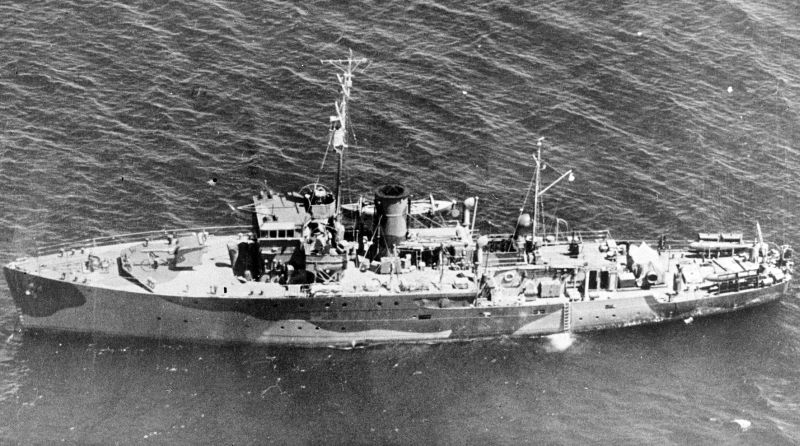 HMAS Wallaroo was lost near Fremantle after a collision on 11 June,1943. Source: . Source: World naval ships.
HMAS Wallaroo was lost near Fremantle after a collision on 11 June,1943. Source: . Source: World naval ships.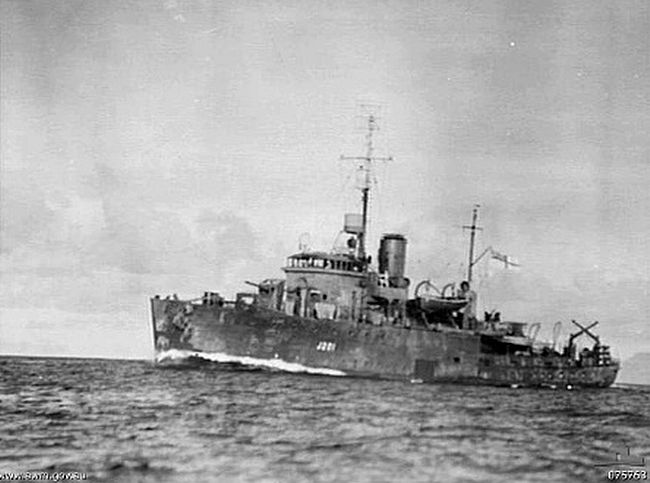 HMAS Geelong in 1944, just before the corvette was lost at the north coast of New-Guinea. Source: Australian War Memorial.
HMAS Geelong in 1944, just before the corvette was lost at the north coast of New-Guinea. Source: Australian War Memorial. HMAS Kalgoorlie with the lettre B on the bow. Source: World naval ship.
HMAS Kalgoorlie with the lettre B on the bow. Source: World naval ship.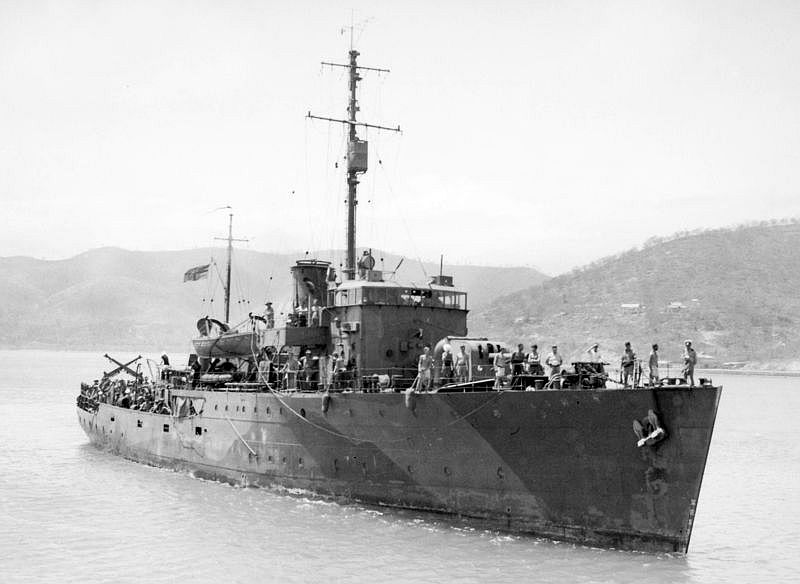 HMAS Armidale was the only Bathurst-class corvette which was lost due to enemy action. Source: World naval ships.
HMAS Armidale was the only Bathurst-class corvette which was lost due to enemy action. Source: World naval ships.The four Bathurst-class corvettes of the RIN
HMIS Bengal J243
After HMIS Bengal was taken into service by Lieutenant Commander W.J. Wilson of the Royal Navy Reserve (RNR) a period of several months followed in Australian waters as a breaking-in period. On the 5th of November of that year the corvette left for India from Fremantle and during the first part of the voyage escorted the Dutch tanker Ondina. The Ondina was on her way to Persia in order to fetch a load of crude oil and carried only several hundred tons of grain as ballast plus 150 tons of fuel for HMIS Bengal. On 11 November the allied ships ran into the Japanese auxiliary cruisers Hokoku Maru and Aikoku Maru which had been sent on a mission as merchant ship raiders. The Bengal attacked Hokoku Maru with her twelve pounder in order to provide an escape to Ondina. Captain Horsman of the Dutch tanker however understood quite quickly that he would not be able to escape with his rather slow moving tanker from the fast Japanese raiders and decided to support HMIS Bengal and also attacked Hokoku Maru with his 10.2cm cannon. A lucky hit by Ondina detonated a torpedo aboard the enemy ship which made her sink. The Hokoku Maru and Aikoku Maru had damaged the allied ships with 14cm grenades, but both ships succeeded in reaching a safe haven. Already during the Second World War the battle of the tanker Ondina and HMIS Bengal received a lot of positive attention but only after the war many crew members of both ships were decorated, either as survivors or posthumously. HMIS Bengal was repaired in Bombay and was deployed as an escort during all of the war. Early 1950 HMIS Bombay became INS (Indian Navy Ship) when India became independent from Great Britain. In 1960 the ship was taken out of service and sold to be scrapped.
HMIS Bombay J249
After her entering into service HMIS Bombay was temporarily stationed in Sydney from where her trials and breaking-in period were carried out. In September 1942 the corvette left for Colombo, Ceylon, and from there to British India. During the Second World War the ship was mainly active as an escort to and from the Persian Gulf. In April 1945 HMIS Bombay supported Operation Dracula, the recapturing of the Burmese capital city of Rangoon by British and Indian troops. After India gained independence on 26 January, 1950, HMIS Bombay was rebaptized into INS Bombay. In 1960 INS Bombay was retired from service and sold in 1961 for scrap. The year after, the ship was actually dismantled.
HMIS Madras J237
The Madras was sent to Bombay after her breaking-in period where she arrived via Colombo on Ceylon, in August 1942. During the war the corvette was active as an escort vessel and in submarine warfare. On 26 January, 1950, she transferred into INS Madras. After having been relieved from her duties the Madras was sold for scrap in 1960.
HMIS Punjab
After entering into service and her breaking-in period HMIS Punjab arrived in July 1942 in the Indian port of Bombay, which would be her home base for the remainder of the war. Just like her sister ships, Punjab was mainly active as an escort vessel during the Second World War. Only in July 1945 HMIS Punjab was deployed as a mine sweeper. Together with other Indian and British mine sweepers Punjab cleared the waters around the Malayan peninsula Phuket from mines, as preparation for the allied amphibian landings on the British Malay mainland. When Pakistan and India , on 14 August, 1947, officially were recognized as separate future independent countries, Punjab was transferred to the Pakistan Navy.
Images
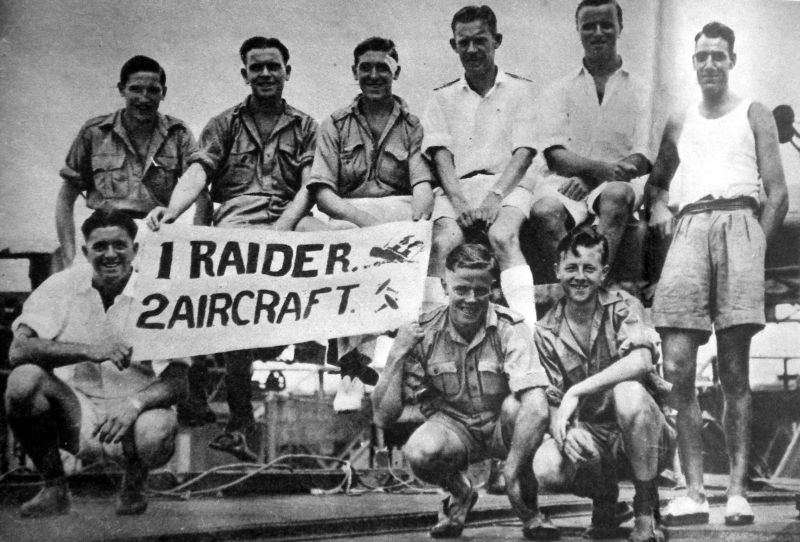 Gun crew of MS Ondina in Fremantle. Source: . Source: Australian War Memorial.
Gun crew of MS Ondina in Fremantle. Source: . Source: Australian War Memorial.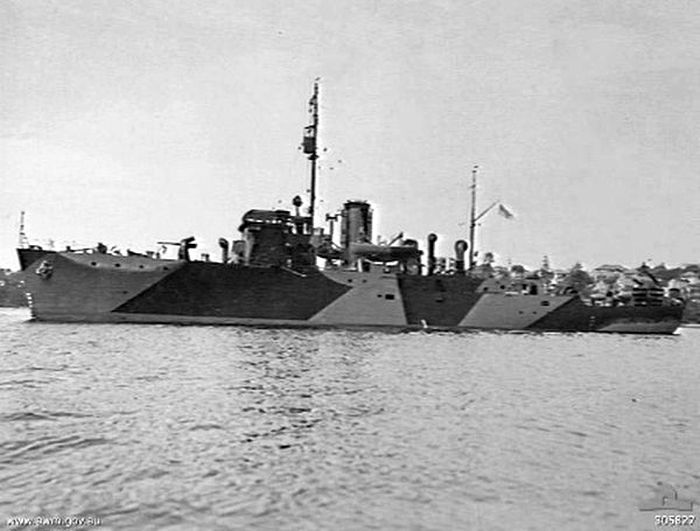 HMIS Bombay in camouflage colors of the British Eastern Fleet. Source: Australian War Memorial.
HMIS Bombay in camouflage colors of the British Eastern Fleet. Source: Australian War Memorial.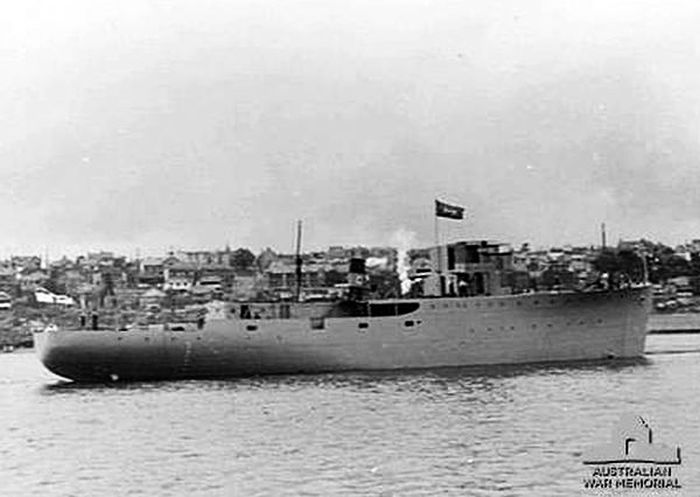 HMIS Madras. Source: Australian War Memorial.
HMIS Madras. Source: Australian War Memorial.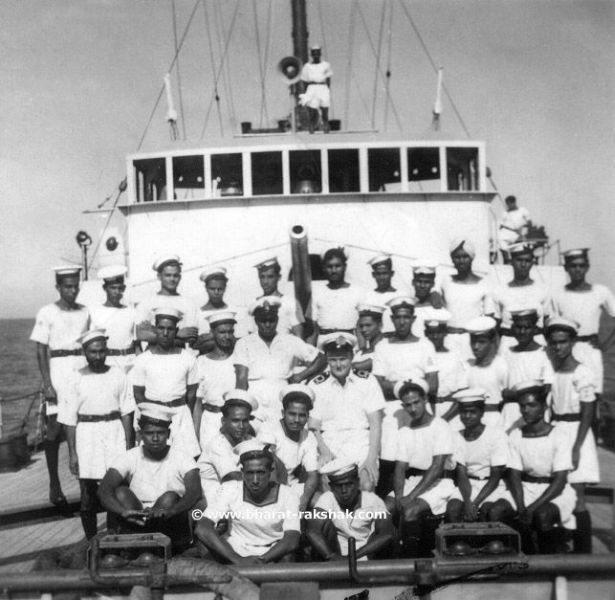 Crew of HMIS Madras. Source: Bharat-rakshak.
Crew of HMIS Madras. Source: Bharat-rakshak.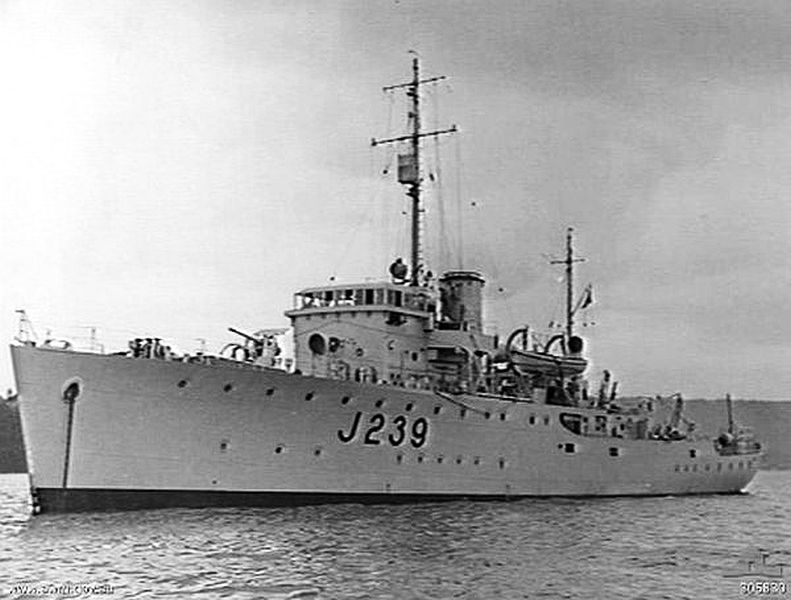 HMIS Punjab in 1942. Source: Wikipedia.
HMIS Punjab in 1942. Source: Wikipedia.The Bathurst-class corvettes after the Second World War
The British Admiralty decided to sell the 20 Bathurst-class corvettes which were built for their account after the war. Eight corvettes were sold to the Dutch Royal Navy and five went over to the Turkish navy.
HMAS Pirie, Gawler and Launceston were taken out of service in Sydney on 5 April, 1946, and transferred to the Royal Navy as HMS Pirie, HMS Gawler and HMS Launceston. On the 21st of May 1946 the three ships left for Colombo where they were handed over to the Turkish navy and taken into service as TCG Amasra, TCG Ayvalik and TCG Ayancik. ( TCG: Türkiye Cumhuriyeti Gemisi > Ship of the Turkish Republic<) Ayvalik stayed in Turkish service till 1963 and Amasra even till 26 March 1984. The Ayancik later on received the name Hamit Naci and was retired from service in 1965. HMAS Geraldton was taken out of Australian service on 14 June, 1946, and immediately transferred to the Turkish navy with the name TCG Antalya. When the former Gawler was retired by the Turks in 1963, the Antalya received the name Ayvalik. The corvette remained in Turkish service until 1975. Mid-April 1946, HMAS Broome was retired from Australian service in Fremantle and transferred to British service as HMS Broome. On May the 8th of that year the ship left from Fremantle to Colombo and from there to Istanbul where she arrived on 22 August. In the Turkish harbor the corvette was transferred to the Turkish navy who took her into service under the name of TCG Alanya. The Alanya remained in Turkish service till 1975. It may be assumed that all five Turkish Bathurst-class corvettes have been scrapped after having been retired.
HMAS Maryborough was sold to the Australian General Trading and Shipping Syndicate who took her into service as Isobel Queen. The company sold the vessel in 1953 to Carr Enterprises Ltd. in Sydney to be scrapped.
HMAS Ballarat was sold on 10 July 1947 to China Traders Ltd., but the ship stayed in Australian waters sailing for the Hong Kong ship owners. In December the former Ballarat was sold on to the Ta Hing Company, also established in Hong Kong. She was converted into a coaster and rebaptized into Carmencita and destined to function as a freighter in China. HMAS Goulburn was retired from the Australian navy and sold to Captain S.P.Bell of the Pacific Enterprise Inc. on October 13th. The vessel then went through P.J.Lobo & Co from Hong Kong to A.H. Carrol acting as an agent for Ta Hing Company. The former Goulburn also was destined to enter into service in the coastal waters of China. In January 1951 the Commonwealth Government however forbade the use of the former war ships in Chinese waters. In 1953 both ships were sold for scrap to the Australian company John Manners & Co.Pty.Ltd. in Sydney.
HMAS Bendigo was retired in Sydney on 27 September, 1946, and sold straight away on 5 May, 1947, to the Ta Hing Company and called Cheung Hing. The firm from Hong Kong sold the corvette on to the navy of the Peoples Republic of China which the Commonwealth Government could not prevent without jeopardizing the diplomatic relationship with China. The former Bendigo remained in Chinese service until 1987 as Luoyang.
HMAS Whyalla was retired in Brisbane on May 16th, 1946, and sold to the Victorian Public Works Department on 10 February, 1947. They took the ship into service as Rip and used her until 1984. In that year the Whyalla City Council bought the ship for 5,000 Australian dollars in order to save her from the scrap yard. The ship was restored and put on shore on a permanent pedestal. On October 29th, 1988 the Whyalla Maritime Museum was officially opened with the corvette as its center piece.
The British Admiralty was not able to find any buyers for HMAS Bathurst and HMAS Cessnock and therefore both corvettes were sold for scrap immediately. The Cessnock on 23 April, 1947, was transferred to the Nan Chiao Shipping and Salvage Co.Ltd. in Shanghai, China. The Bathurst was bought on 21 June, 1948, by the firm of T.Carr & Co. in Sydney, the predecessor of Carr Enterprises Ltd.
After the war the remaining 33 Australian Bathurst-class corvettes were mainly deployed with 20th and 21st Minesweeping Flotillas. During months and months both fleets swept mines in the waters around Australia, New-Guinea and the Solomons. HMAS Warrnambool on 13 May 1947 struck an Australian mine in the area of the Cockburn Reef, part of the Great Barrier Reef. Soon thereafter the ship sunk; four deadly victims were to be mourned. On 3 July 1972 the wreckage was sold to Cross Diving and Salvage in Dee Why, New South Wales.
HMAS Castlemaine was retired from service on 14 December, 1945, and transferred to the ‘stand-by-fleet’. In 1955 the armament, minesweeping equipment and radio equipment was dismantled of the ship and used as training vessel for engine room personnel on the Flinders Naval Depot near Melbourne. In 1969 the ship was destined to be sold or scrapped. After the necessary lobbying the Australian Government transferred the ship in October, 1973, to the trust on condition that the corvette would be restored to the configuration in which she operated during the Second World War. The Cerberus Trust was absorbed into the larger Maritime Trust of Australia who guided the restoration of the corvette. From 1974 Castlemaine can be admired as a floating museum ship on the South Wharf in Williamstown, in greater Melbourne.
Already in December 1945 the first Bathurst-class corvettes were retired by the RANB and allocated to the ‘stand-by-fleet’. In 1957 the Australian Government decided to lean off the corvettes in the ‘stand-by-fleet’ as it was no longer to be expected that the ships could be made useful in a possible new conflict. Apart from that the RAN had at its disposal a number of better war ships, almost all taken over from the Royal Navy. Most of the corvettes were sold as scrap.
HMAS Colac, Cowra, Gladstone and Latrobe in 1951 were reinstalled in service in requirement of the National Service Program, a training program for reservists and recruits in revision exercises. The Australian navy in 1957 ended her contribution to the program and therefore again the four corvettes were retired and as yet sold for scrap.
In 1952 the navy of New Zealand was prepared to take over from the RAN Stawell, Echuca, Inverell and Kiama. In this way the Australian navy could contribute financially to the acquisition of two aircraft carriers. On March 5th, 1952, the four corvettes entered service. HMNZS Echuca and Stawell were sold for scrap in 1967 and July 1968 respectively to the Pacific Scrap Ltd. in Auckland. HMNZS Kiama and Inverell however only went the same way on 19 August, 1976 and 1 November, 1977, respectively to the same scrap yard. The Royal New Zealand navy used the corvettes mainly as fishing patrol ships.
HMAS Wagga was the last Bathurst-class corvette to leave the RAN. The ship had been repeatedly retired and taken back into service as training vessel. On 28 October, 1960, Wagga was retired definitively and sold for scrap in March 1962 to the South Australian Carrying Company.
Images
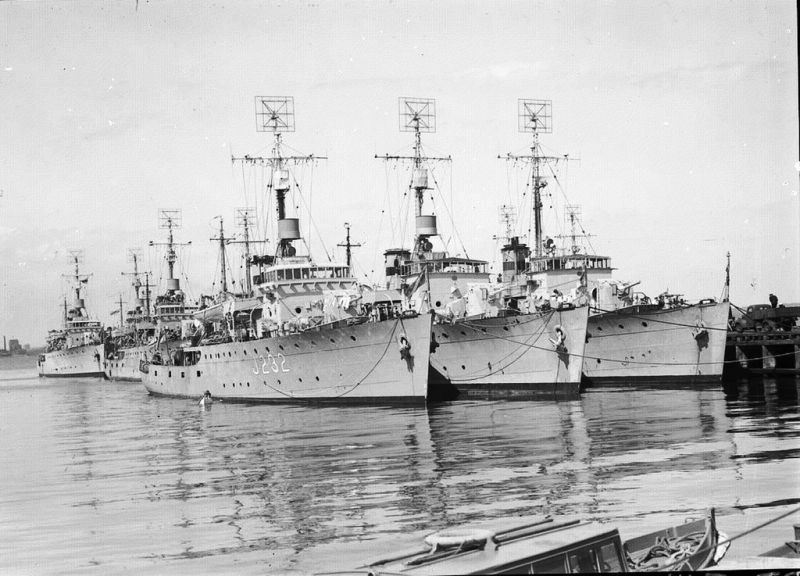 Retired Bathurst-class corvettes in Williamstown, Melbourne 23 January, 1946. Source: World naval ships.
Retired Bathurst-class corvettes in Williamstown, Melbourne 23 January, 1946. Source: World naval ships. HMAS Cowra in 1946. Source: World naval ships.
HMAS Cowra in 1946. Source: World naval ships. HMAS Horsham and HMAS Parkes retired in Fremantle. Source: World naval ships.
HMAS Horsham and HMAS Parkes retired in Fremantle. Source: World naval ships.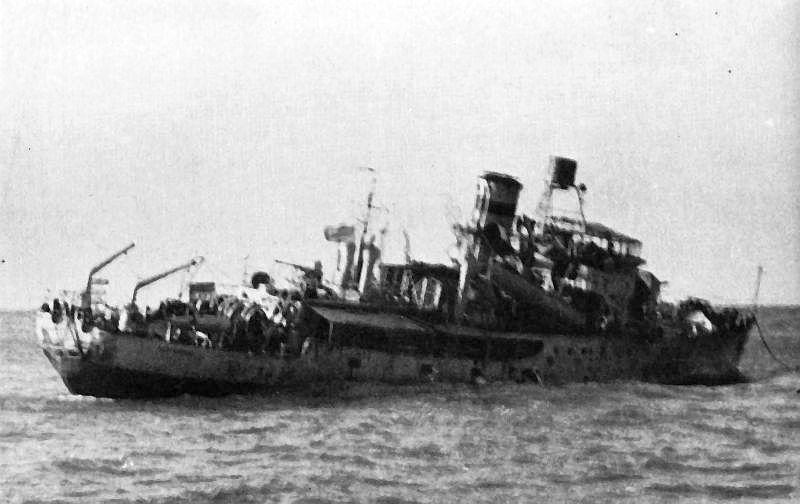 HMAS Warrnambool sinking after hitting a mine 13 September, 1947. Source: World naval ships.
HMAS Warrnambool sinking after hitting a mine 13 September, 1947. Source: World naval ships.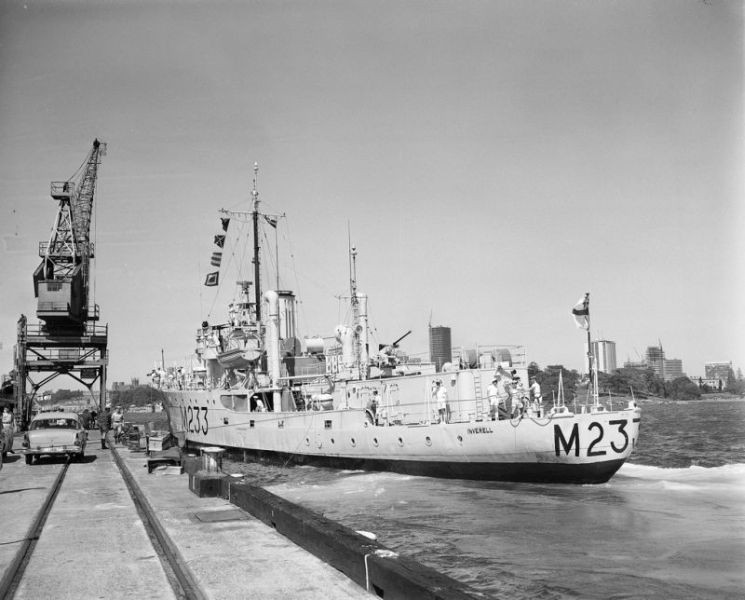 HMNZS Inverell in 1965. Source: World naval ships.
HMNZS Inverell in 1965. Source: World naval ships.Bathurst-class corvettes used by The Royal Dutch Navy
Right after the Second World War the Netherlands were in urgent need for war ships mainly to be able to restore peace and order in Indonesia where independence was looming. With the British Admiralty it was agreed that the Dutch would take over eight Bathurst-class corvettes. In first instance four of these ships were received under a loan construction as the transfer documents were not yet finalized. These corvettes were transferred in Australia. By political entanglements in Australia, where the unions did not agree with a quick retirement of the Bathurst-class corvettes, it was no longer possible to transfer the last four ships in Australia. Therefore the choice was made to process a transfer on Trincomalee on Ceylon. The Royal (Dutch) Navy sent Hr.Ms. Van Kinsbergen with the nominated 220 crew for the corvettes to Ceylon.
(Hereinafter when ‘Royal Navy’ is being used, it means The Royal Navy of the Netherlands or ‘the Royal Dutch Navy’. FB.)
After the transfer the original bow numbers, starting with J or B, were maintained for some time to come. Also the original names were kept as they were, but preceded by ‘Hr.Ms.’. Upon receipt of their Dutch names they were classified as minesweepers although they were never used in that capacity. The Royal Navy used the ships mainly as patrol boats in the Dutch East Indian waters and around New-Guinea. The sweeping of mines in the East Indian waters was left up to the four remaining steel minesweepers of the Jan van Amstel-class.
The ships were called the Batjan-class as Hr.Ms. Batjan had been launched as the first of the eight ships. The ships in alphabetical order were also indicated as Ambon-class corvettes or minesweepers. From 15 June, 1946, the ships received the classification letters MV of mijnenveger [=minesweeper] on the bow, from 15 September, 1946, the letters PK of corvette and from January 1947 the letter P of patrol boat. As part of the NATO the ships were again classified as minesweepers and received the NATO letter M. End 1949 four of the Batjan-class corvettes were transferred to the Indonesian navy The remaining four ships were classified as frigates on 15 July 1952. In those days many Dutch war ships, refurbished or not, were deployed with the NATO, like gun ship Hr.Ms. Van Speyk, the mine-layers Hr.Ms. Willem van der Zaan and Jan van Brakel and the destroyers Hr.Ms. Piet Hein (2), Evertsen and Kortenaer (2). Hr.Ms Ternate was made training ship in Amsterdam in 1956 and from 15 July, 1957, the three remaining Bathurst-class corvettes were used as troop-accommodation-ship. The four ships received the letter A of auxiliary vessel as their last bow number.
Hr. Ms. Batjan J145, B247, MV25, PK5, P10, M813, F813, A870
HMAS Lismore was retired from Australian services on July 3rd, 1946 in Trincomalee and the same day introduced into Dutch service as Hr.Ms. Lismore. At arrival in Tandjongpriok, the port of Batavia on Java, the ship was baptized as Hr.Ms. Batjan. The corvette was involved in the battle against the Indonesian nationalists till the independence on 27 December, 1949. In those years the ship was active as patrol vessel and supported the landings of the Dutch Royal Marines during the ’policing actions’ as those military actions were called [so as not to give the impression that a real war was being waged. FB]. After Indonesia became independent, Hr.Ms. Batjan was active in Dutch waters as patrol boat and as fishing inspection ship. In 1958 Batjan was sold for scrap.
Hr. Ms. Ambon J183, B239, MV21, PK1, P6
On 17 January 1946 HMAS Cairns was retired from Australian services and introduced into the Royal Navy as Hr.Ms. Cairns. On 7 March of that year the corvette left for Makassar on Celebes (today’s Sulawesi). From the 1st of June, 1946, the name of the ship officially became Hr.Ms. Ambon. The Dutch vessel fought in the Indonesian independence struggles when she supported landings of Dutch marines on Madura, Sumba, Bali, Lombok and Flores. On 1 November, 1946 the ship ran aground on a reef south east of Timor and it took three days before she became afloat again. At return in Surabaja her commander Lieutenant at Sea First Class P. Cool was relieved from his function. Till the end of 1949 Hr.Ms. Ambon carried out patrol missions and showed the flag in the East Indian waters. From time to time floating mines were disarmed, but there was never any real minesweeping mission ordered. On 6 April Hr.Ms. Ambon, was first transferred to the Indonesian navy in loan who later on bought the vessel and it was named KRI Banteng. In 1968 finally the corvette was sold to be scrapped.
Hr. Ms. Banda J172, MV22, PK2, P7
HMAS Wollongong was retired from Australian services on 11 February, 1946, in Sydney and transferred to the Royal Navy as Hr.Ms. Wollongong. At arrival in Makassar the ship was rebaptized as Hr.Ms. Banda. Just like her sister ships the Dutch corvette was active as a patrol vessel in Indonesian waters until December 1949. On August the 8th, 1947, Hr.Ms. Banda captured several proas with rubber. In the struggle following this incident one man was killed aboard the Dutch ship. Together with the Ambon, Banda was transferred to the newly established Indonesian navy as KRI Radjawali. The Bathurst-class corvette remained in Indonesian service till 1968 after which she was sold on to Hong Kong to be scrapped.
Hr. Ms. Boeroe J157, B251, MV26, PK6, P11, M814, F814, A871
HMAS Toowoomba was retired from RAN services in Trincomalee on 5 July, 1946 and entered Dutch service as Hr.Ms. Toowoomba. The next day the corvette left via Sabang on Sumatra for Tandjongpriok where she arrived on 18 July and was called Hr.Ms. Boeroe. After Boeroe had participated in the fighting against the Indonesian nationalists till end 1949 the ship became the first ship-on-station in Dutch New-Guinea. In 1952 Hr.Ms Boeroe was relieved by Hr.Ms. Ternate and the corvette left for the Netherlands. After a large maintenance check the ship was deployed in Dutch waters as a patrol boat and police cruiser. In September 1961, Boeroe was sold to be scrapped.
Hr. Ms. Ceram J198, B238, MV27, PK7, P12, M815, F815, A872
Also HMAS Burnie was retired from RAN services in Trincomalee on 5 July, 1946 and joined the Dutch navy as HR.Ms. Burnie. Together with Hr.Ms. Toowoomba and Hr.Ms. Ipswich the corvette the next day left via Sabang to Tandjong Priok where the ship was named Hr.Ms. Ceram. Just like her sister ships, Ceram fought the Indonesian nationalists till end 1949. In 1950 the corvette arrived in the Netherlands where it was deployed as ship on guard duty, fishery inspection vessel, patrol boat and as tracking ship of the Dutch aircraft carrier Hr.Ms. Karel Doorman. The Ceram was sold to be scrapped in 1958.
Hr. Ms. Morotai J186, B244, MV28, PK8, P13
Together with HMAS Burnie and HMAS Toowoomba HMAS Ipswich was retired from RAN services in Trincomalee on 5 July 1946 and entered service with the Royal Navy as Hr.Ms. Ipswich. Via Sabang the corvette left the following day for Tandjong Priok where her name was changed into Hr.Ms. Morotai. Till end 1949 Morotai was active in the East Indian waters during the Indonesian independence struggle. On 28 December 1949 the vessel was transferred to the Indonesian navy who took her into service as KRI Hang Tuah. On 28 April, 1958, HanTuah was bombed and sunk by a Douglas A-26 Invader of the Indonesian rebels who fought the troops of President Sukarno from 1957 till 1961. The aircraft, including pilot, had been made available by the CIA to the separatists. The CIA supported the rebels with such aircraft and other weaponry and equipment because also the United States were of the opinion that Sukarno discriminated East Indonesia and Sumatra in favor of Java. At the sinking of KRI Hang Tuah 18 crew died and 28 were wounded.
Hr. Ms. Ternate J192, B245, MV23, PK3, P8, M816, F812, A874
HMAS Kalgoorlie was retired from Australian service on May 8th, 1946, in Melbourne and taken over by the Royal Navy as Hr.Ms. Kalgoorlie. On 28 June of the same year the corvette left for Makassar and from there to Kupang on Dutch Timor. On 16 July the Dutch ship left from Kupang and was officially named Hr.Ms. Ternate from that day onwards. Just like her sister ships Ternate was kept busy patrolling, showing the flag and supporting the policing actions in Indonesia till the end of 1949. In 1950 the corvette left for the Netherlands for heavy maintenance. Two years later she was posted on station in New Guinea and arrived on 20 December 1952 in Sorong. On 19 September the corvette left from Sorong to Townsville, Sydney and Cairns at the Australian east coast before the ship returned to her base in Netherlands New Guinea on 22 December. On August 17th, 1955, Hr.Ms. Ternate left via Singapore, Colombo, Aden , the Suez Canal, Messina and Gibraltar to Den Helder where she arrived on 27 October. In 1956 Ternate was made available to the Technical Training Centre of the Royal Navy (TOKM) in Amsterdam. On 21st September, 1961, the ship was sold to be scrapped.
Hr. Ms. Tidore J181, B250, MV24, PK4, P9
On 30 April, 1946, HMAS Tamworth entered into Dutch service as Hr.Ms. Tamworth after the corvette had been retired from Australian services earlier that day. On the same day as Hr.Ms. Kalgoorlie, Tamworth departed for Makassar and from there to Kupang. On 16 July 1946, the corvette left from Dutch Timor and was called Hr.Ms. Tidore. Till end 1949 Hr.Ms. Tidore participated in the battle against the Indonesian nationalists and fulfilled the same duties as her sister ships. On 28 December 1949 the corvette was transferred to the Indonesian navy as KRI Pati Unis. The vessel remained in Indonesian service till 1969 after which she was sold to be scrapped.
Images
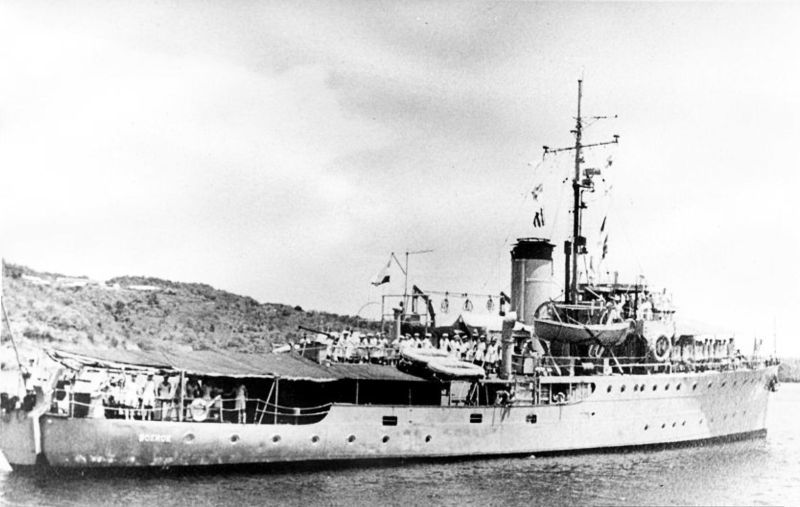 Hr.Ms. Boeroe in Dutch East India. Source: Maritiemdigitaal.
Hr.Ms. Boeroe in Dutch East India. Source: Maritiemdigitaal.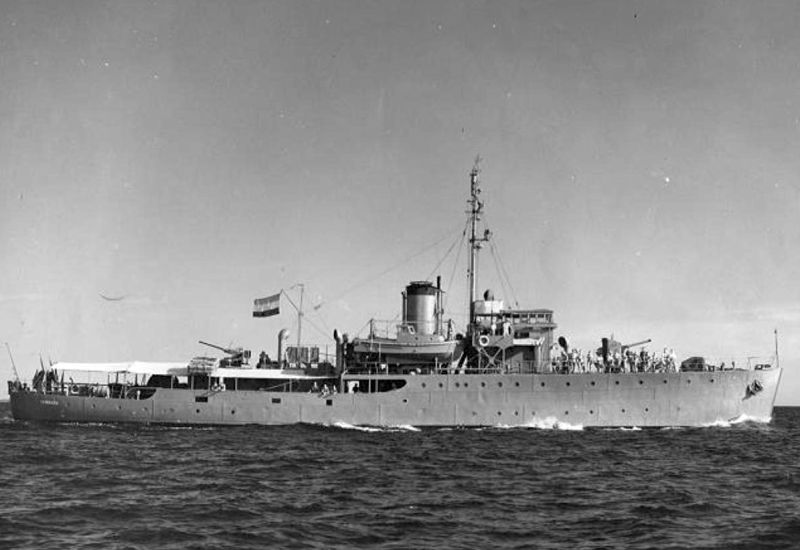 Hr.Ms. Ternate in Eats Indian waters. Source: Dutchfleet.
Hr.Ms. Ternate in Eats Indian waters. Source: Dutchfleet.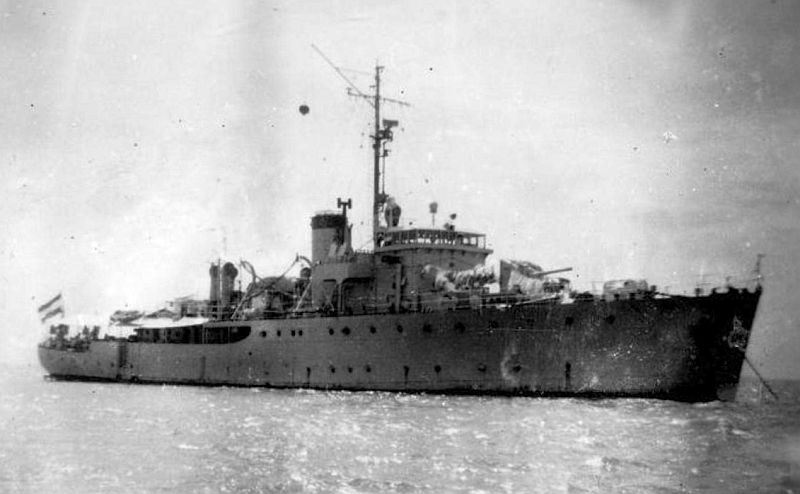 Hr.Ms. Morotai at anchor in Dutch East India. Source: Marine Museum.
Hr.Ms. Morotai at anchor in Dutch East India. Source: Marine Museum.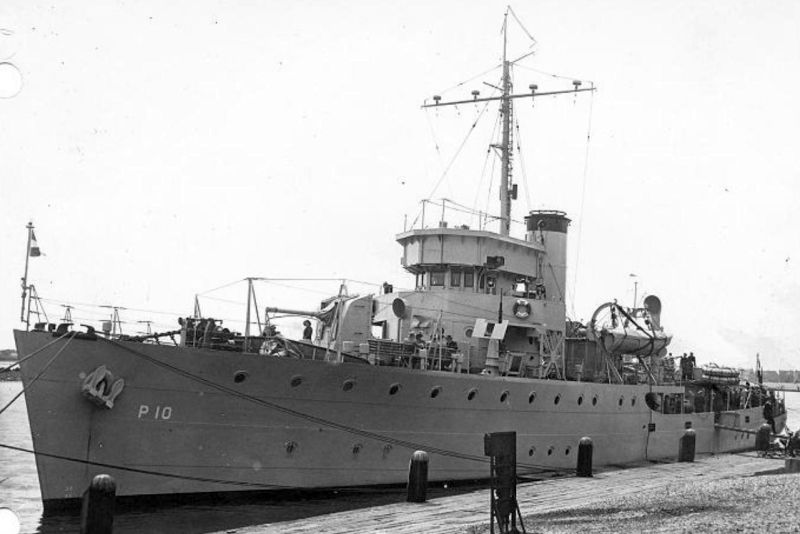 Patrol boat Hr.Ms. Batjan in Dutch East India, 28 May 1948.. Source: Marine Museum.
Patrol boat Hr.Ms. Batjan in Dutch East India, 28 May 1948.. Source: Marine Museum. Hr. Ms. Ceram as frigate F815. Source: Maritiemdigitaal.
Hr. Ms. Ceram as frigate F815. Source: Maritiemdigitaal.Class overview 2: end of the Bathurst-class corvettes
| Name | Retired | End - SFS = sold for scrap) |
| HMAS Ararat | 11 April 1947 | SFS by private person in 1961 |
| HMAS Armidale | - | Sunk by 13 Japanese aircraft; 1 December 1942 |
| HMAS Ballarat | 27 September 1946 | SFS by private person in 1953 |
| HMAS Bathurst | 27 September 1946 | SFS 21 June 1948 |
| HMAS Benalla | 28 January 1946 | SFS 20 February 1958 |
| HMAS Bendigo | 27 September 1946 | SFS by China; date unknown. |
| HMIS Bengal | 1960 | SFS in 1960 |
| HMIS Bombay | 1961 | SFS in 1961 |
| HMAS Bowen | 17 January 1946 | SFS 18 May 1956 |
| HMAS Broome | 29 June 1946 | SFS by Turkey in 1975 |
| HMAS Bunbury | 26 August 1946 | SFS 6 January 1961 |
| HMAS Bundaberg | 26 March 1946 | SFS 6 January 1961 |
| HMAS Burnie | 5 July 1946 | SFS by the Dutch in 1958 |
| HMAS Cairns | 17 January 1946 | SFS by Indonesia in 1968 |
| HMAS Castlemaine | 14 December 1945 | Museum ship since 1973 |
| HMAS Cessnock | 12 July 1946 | SFS 23 April 1947 |
| HMAS Colac | 30 January1953 | Sunk on 4 March 1987 as a target ship |
| HMAS Cootamundra | 8 June 1959 | SFS 28 March 1962 |
| HMAS Cowra | 26 June 1953 | SFS in January 1961 |
| HMAS Deloraine | 30 June 1948 | SFS 8 August 1956 |
| HMAS Dubbo | 7 February 1947 | SFS 20 February 1958 |
| HMAS Echuca | 28 June 1948 | SFS by New Zealand in 1967 |
| HMAS Fremantle | 25 January 1946 | SFS 6 januari 1961 |
| HMAS Gawler | 5 April 1946 | SFS by Turkey in 1963 |
| HMAS Geelong | - | Sunk after collision 18 October 1944 |
| HMAS Geraldton | 14 June 1946 | SFS by Turkey in 1975 |
| HMAS Gladstone | 16 July 1956 | Sold to a private person, thereafter: unknown. |
| HMAS Glenelg | 14 January 1946 | SFS 2 May 1957 |
| HMAS Goulburn | 27 September 1946 | SFS by a private person in 1953 |
| HMAS Gympie | 23 May 1946 | SFS 6 January 1961 |
| HMAS Horsham | 17 December 1945 | SFS 8 August 1956 |
| HMAS Inverell | 14 June 1946 | SFS by New Zealand 1 November 1977 |
| HMAS Ipswich | 5 July 1946 | Bombed and sunk by Indonesian rebels in 1958 |
| HMAS Junee | 21 Augustus 1957 | Scrapped in 1968 /td> |
| HMAS Kalgoorlie | 8 May 1946 | SFS by the Dutch in 1961 |
| HMAS Kapunda | 14 January 1946 | SFS 6 January 1961 |
| HMAS Katoomba | 2 August 1948 | SFS 2 May 1957 |
| HMAS Kiama | 3 April 1946 | SFS by New Zealand 19 August 1976 |
| HMAS Latrobe | 13 March 1953 | SFS op 18 May 1956 |
| HMAS Launceston | 23 March 1946 | SFS by Turkey in 1965 |
| HMAS Lismore | 3 July 1946 | SFS by the Dutch in 1958 |
| HMAS Lithgow | 8 June 1948 | SFS 8 October 1956 |
| HMAS Maryborough | 17 December 1945 | SFS by a private person in 1953 |
| HMIS Madras | 1960 | SFS in 1960 |
| HMAS Mildura | 11 September 1953 | SFS 8 September 1965 |
| HMAS Pirie | 5 April 1946 | SFS in Turkey in 1984 |
| HMAS Parkes | 17 December 1945 | SFS 2 May 1957 |
| HMIS Punjab | 15 August 1946 | Transferred to the Pakistan navy; thereafter unknown |
| HMAS Rockhampton | 5 August 1946 | SFS 6 January 1961 |
| HMAS Shepparton | 10 May 1946 | SFS 20 February 1958 |
| HMAS Stawell | 26 March 1946 | SFS by New Zealand in July 1968 |
| HMAS Strahan | 25 Januariy1946 | SFS 6 January 1961 |
| HMAS Tamworth | 30 April 1946 | SFS by Indonesia 1969 |
| HMAS Townsville | 5 August 1946 | SFS 8 August 1956 |
| HMAS Toowoomba | 5 July 1946 | SFS by the Dutch in 1961 |
| HMAS Wagga | 28 October 1960 | SFS March 1962 |
| HMAS Wallaroo | - | Sunk after collision 11 June 1943 |
| HMAS Warrnambool | - | Sunk after hitting a mine op 13 September 1947 |
| HMAS Whyalla | 16 May 1946 | Museum ship since 1988 |
| HMAS Wollongong | 11 February 1946 | SFS by Indonesia in 1969 |
Images
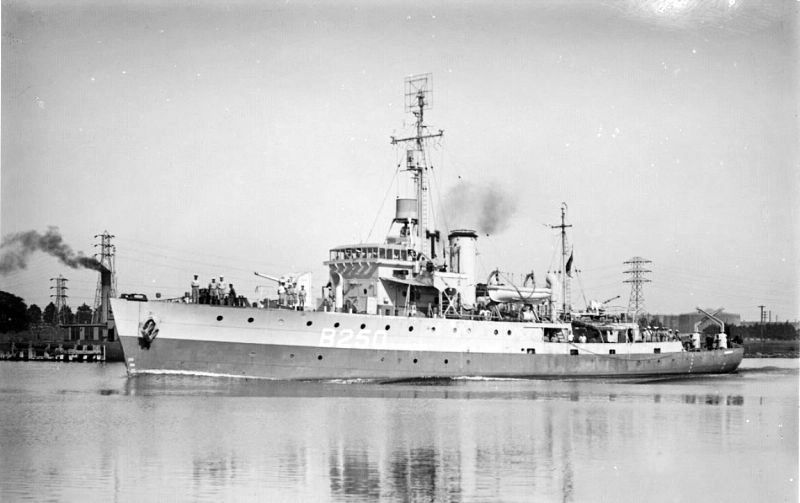 HMAS Tamworth on the river Yarra just before the corvette was to be retired in 1946. Source: World naval ships.
HMAS Tamworth on the river Yarra just before the corvette was to be retired in 1946. Source: World naval ships.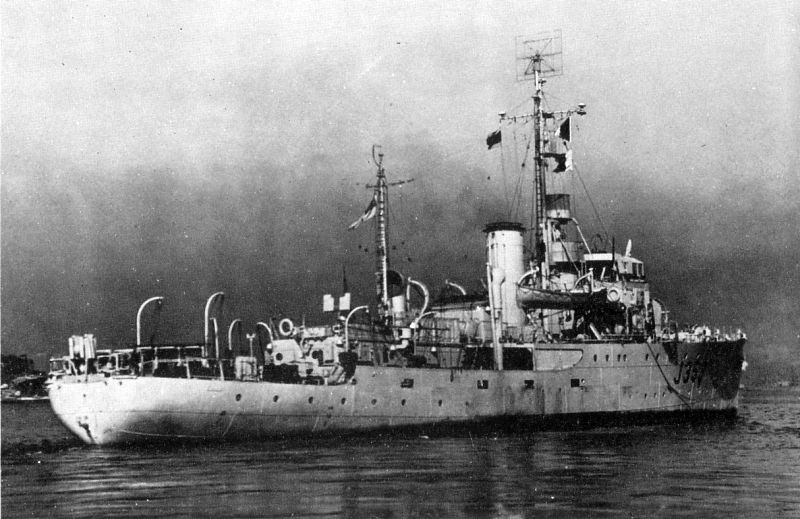 HMAS Kiama as training ship in 1952. Source: World naval ships.
HMAS Kiama as training ship in 1952. Source: World naval ships.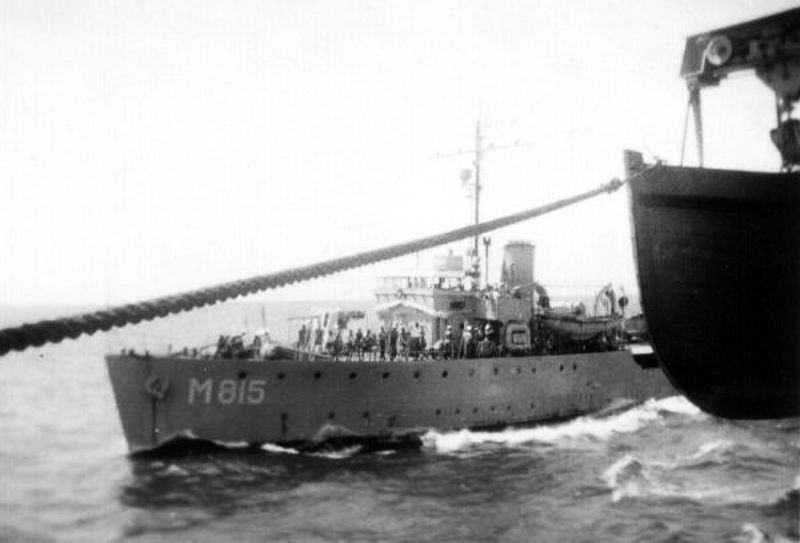 Hr. Ms. Ceram as escort ship of Hr. Ms. Karel Doorman. Source: Dutchfleet.
Hr. Ms. Ceram as escort ship of Hr. Ms. Karel Doorman. Source: Dutchfleet.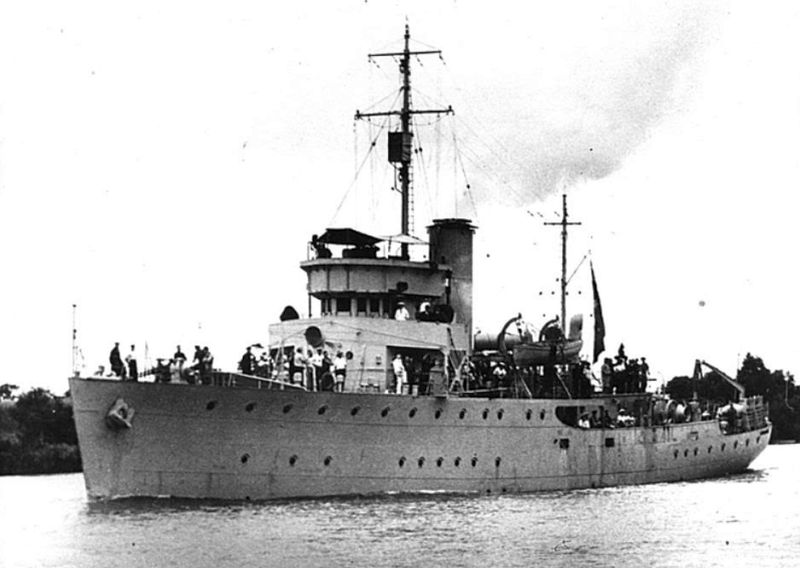 Maryborough in private service as Isobel Queen. Source: World naval ships.
Maryborough in private service as Isobel Queen. Source: World naval ships.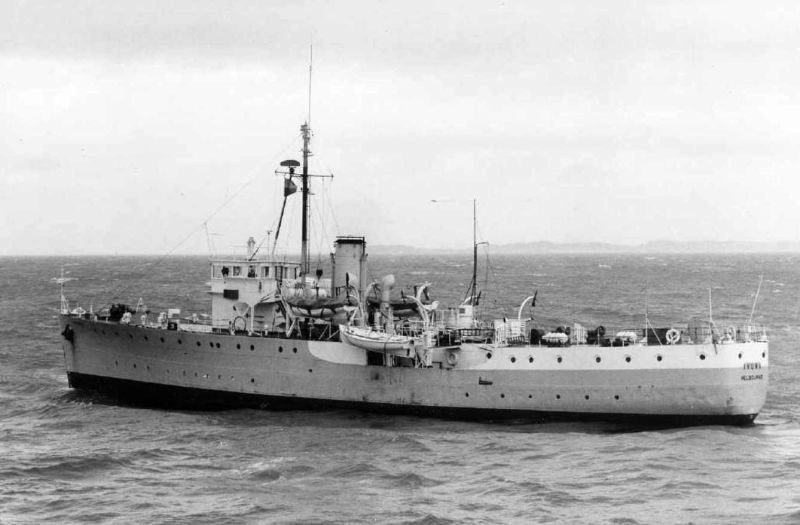 The ex-Gladstone as yacht in 1973. Source: World naval ships.
The ex-Gladstone as yacht in 1973. Source: World naval ships.Conclusion
The Australian Bathurst-class corvettes in many ways was a remarkable series of war ships. They were the first Australian war ships designed and built in Australia, while the country had no experience in that field whatsoever. The crews of the corvettes consisted for the majority of reservists and conscripts of whom most had never sailed before. Even the commanders of the ships in most cases where inexperienced and in fact the Bathurst-class corvettes were a perfect reflection of the Australians themselves
They were no-nonsense ships, constructed cheaply under improvised circumstances, but with enormous motivation and drive. During the first years of war the corvettes entered the battle field with desperation but in the course of the Second World War, this turned into a dedicated fighting spirit which was carried out under the motto: Don’t talk too much, just do it.
The 56 Bathurst-class corvettes in Australian services during the Second World War had logged altogether 6,700,000 nautical miles. In total only 83 crew lost their lives during their service with the RAN. Of the 60 ships of the class during the war only three were lost of which one by direct enemy action. Some of the ships served with foreign navies till the 1980’s These are good numbers for ships that were designed and constructed under circumstances under heavy time pressure in order to carry out their duties during the course of World War Two.
Images
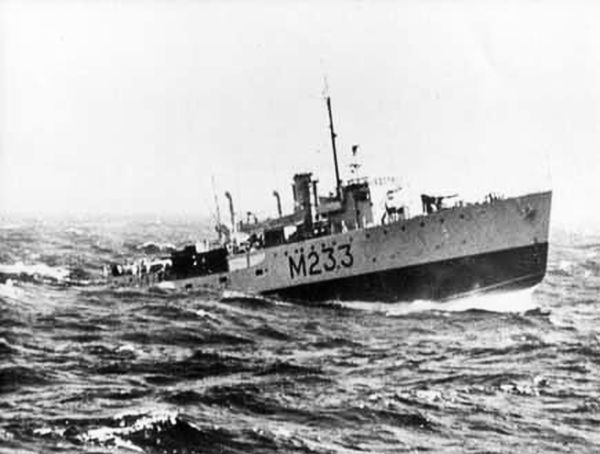 HMAS Inverell shows her sea worthiness. Source: Navy gov..
HMAS Inverell shows her sea worthiness. Source: Navy gov.. Crew HMAS Maryborough in Alexandria (Egypt), 1943. Source: Navy gov..
Crew HMAS Maryborough in Alexandria (Egypt), 1943. Source: Navy gov..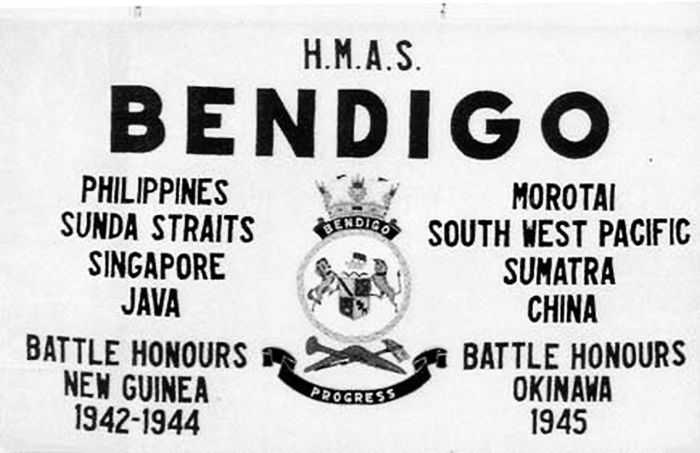 Flag with “Battle Honours” of HMAS Bendigo. Source: Navy gov..
Flag with “Battle Honours” of HMAS Bendigo. Source: Navy gov..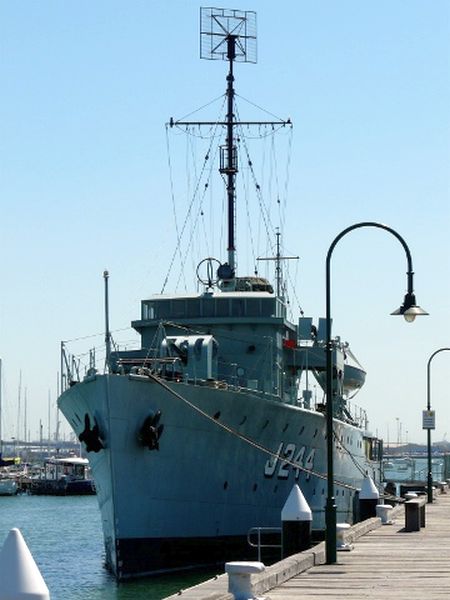 HMAS Castlemaine – museum ship. Source: HMAS Castlemaine.
HMAS Castlemaine – museum ship. Source: HMAS Castlemaine. HMAS Whyalla – museum ship. Source: World naval ships.
HMAS Whyalla – museum ship. Source: World naval ships.Information
- Article by:
- Peter Kimenai
- Translated by:
- Fred Bolle
- Published on:
- 31-10-2016
- Last edit on:
- 23-03-2024
- Feedback?
- Send it!
Related sights
Related books
Sources
- AMSTEL W.H.E. VAN, De schepen van de Koninklijke Marine vanaf 1945, De Alk bv, Alkmaar, 1991.
- BEZEMER, K.W.L., Verdreven doch niet verslagen, Uitgeversmaatschappij W. de Haan N.V., Hilversum, 1967.
- BOSSCHER, PH., M., De Koninklijke Marine in de Tweede Wereldoorlog deel 3, Uitgeverij T. Wever B.V., Franeker, 1990.
- MCCURTIE, F.E., Jane`s Fighting Ships of World War II, Military Press, New York, 1989.

